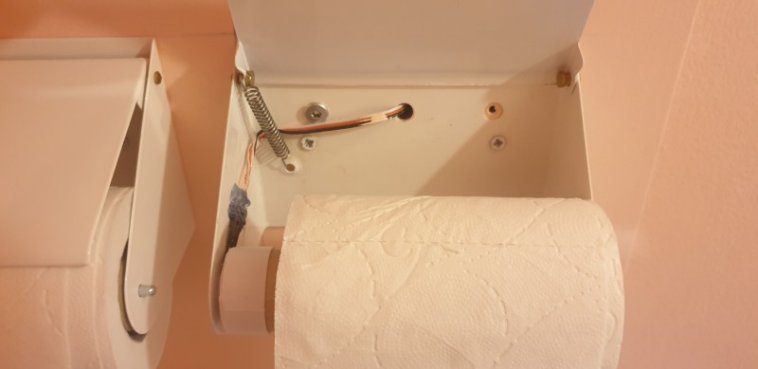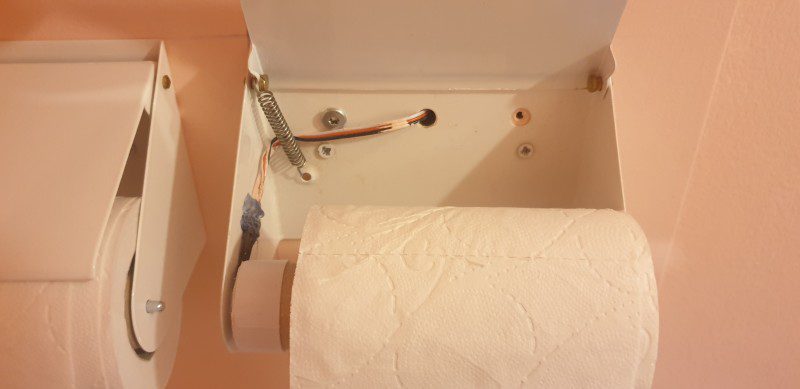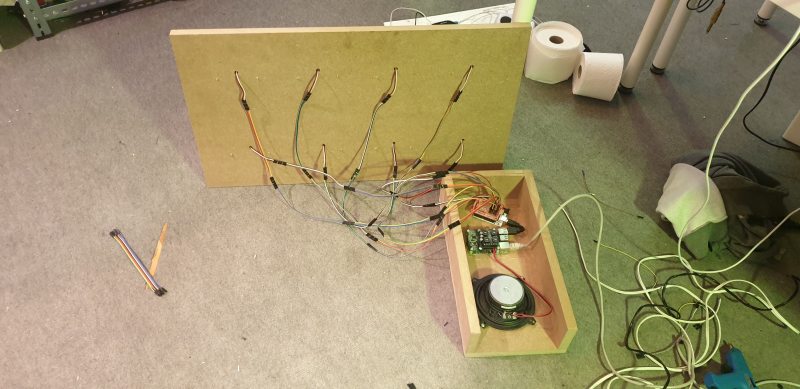You gotta roll with it
The system is built around a Raspberry Pi, a HiFiBerry AMP to output high-quality sound to a hidden speaker, and an Arduino Mega to take readings from eight Hall effect sensors. In each toilet roll holder, a 3D-printed part contains a circular four-pole magnet that triggers the Hall effect sensor when rotated. Whenever it receives data from the sensors via the Arduino, Raspberry Pi outputs the respective sound sample for each moving toilet roll.
“As long as a roll is rolling, the Arduino will send a continuous message telling the Pure Data patch to play that specific sample,” says Max. “It’s built in such a way so that the voice will sing as long as the roll is rolling.”
A few technical issues were encountered in the build process, including random instances of failure to work: “My audio patch (program) consumed 100% CPU and clogged the whole Raspberry Pi,” recalls Max. “That version used windowing functions to create seamless pitch shifting of the samples I used for audio playback. Had to abandon that…”
Max also had to fiddle with the Hall effect sensors for quite a while before he was happy with their placement, and a colleague assisted with the 3D prints, but all their efforts proved worthwhile.
When it comes to changing the rolls, this is just done normally and the only thing that people need to remember is to put the roll back in the correct direction: “The magnets inside the 3D print must face the Hall effect sensor on the left.”
Flushed with success
While Max has had great feedback on his creation, “there hasn’t been much interaction since people are out of office nowadays. I’m currently learning how to play it so I can hold toilet concerts.”
Integral to the Singing Toilet, and to all his work, has been Raspberry Pi. “[It’s] my go-to tool for interactive audio, mainly because I’m so used to it, but also because there’s such a great community where any help needed is out there to be found,” Max tells us. “My past projects with Raspberry Pi include a huge dance carpet, a synth made of steel, museum exhibits, and various interactive audio projects.”




